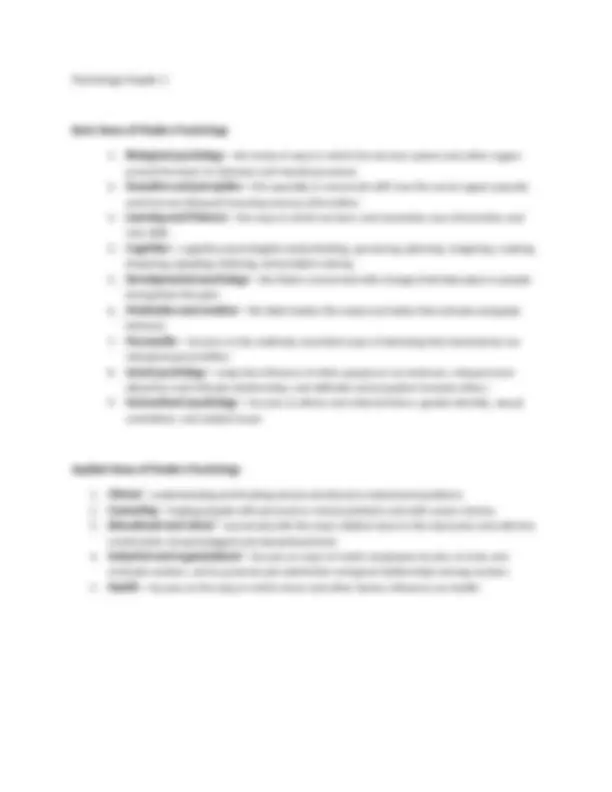



Study with the several resources on Docsity

Earn points by helping other students or get them with a premium plan


Prepare for your exams
Study with the several resources on Docsity

Earn points to download
Earn points by helping other students or get them with a premium plan
Community
Ask the community for help and clear up your study doubts
Discover the best universities in your country according to Docsity users
Free resources
Download our free guides on studying techniques, anxiety management strategies, and thesis advice from Docsity tutors
An overview of the history and major branches of psychology, from ancient greek philosophers to modern definitions and applications. It covers key figures, from aristotle to sigmund freud, and introduces the main areas of study, including biological psychology, sensation and perception, learning and memory, cognition, developmental psychology, motivation and emotion, personality, social psychology, and sociocultural psychology. Applied areas such as clinical, counseling, educational, industrial and organizational, and health psychology are also discussed.
Typology: Study notes
1 / 2

This page cannot be seen from the preview
Don't miss anything!


Pyschology Chapter 1
Psychology Chapter 1 Basic Areas of Modern Psychology